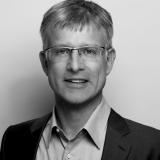Coal exit funding used to explore geothermal potential in Germany's most populous state
Clean Energy Wire
Research institute Fraunhofer IGE is setting up a research laboratory for geothermal energy generation in western German North Rhine-Westphalia, the country’s most populous state. The project will be financed with 52 million euros coming from the country’s coal phase-out transformation funding in a bid to preserve local energy generation and explore geothermal energy’s potential for the economy’s decarbonisation.
“Many applications are possible for climate friendly energy from thermal water layers,” Fraunhofer IGE said in a press release. This would include local heating grids, greenhouses for farming, the chemical industry, food producers, paper production or basic industries, such as metal or cement. “Ground heat is available reliably throughout the year, it is sustainable, affordable, independent of the weather, crisis-proof, import-independent and nearly inexhaustible,” the institute said, urging the further development of the technology across Europe.
According to the institute, the research laboratory planned in the Aachen region near the border with Belgium would be unique in Europe and start off with a comprehensive mapping of the region several kilometers into the ground to decide on the best locations. Using sonic waves, the researchers hope to gain more knowledge about the types of rock prevalent in the ground, the porosity of geological layers and the presence of natural water reservoirs. At the Weisweiler lignite plant, the institute plans to open a branch focused on possible industry applications for geothermal heat that could help the heavily industrialised region to decarbonise.
“The major potential of geothermal energy for a climate neutral heat supply so far remains largely unused in Germany,” said Stefan Wenzel, state secretary in the economy ministry (BMWK), adding that “climate neutral heaty supply is of great importance at the municipal level.” Germany plans to generate half of its district heating in a climate neutral way by 2030 and connect up to 100,000 buildings to district heating networks per year, Wenzel added.

